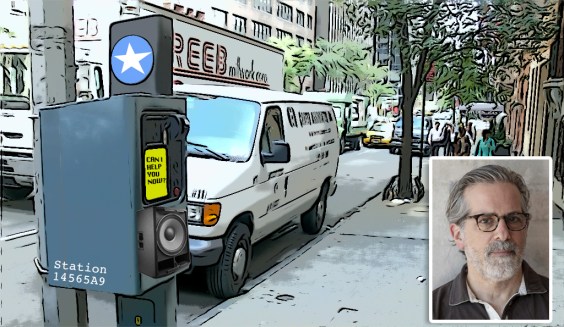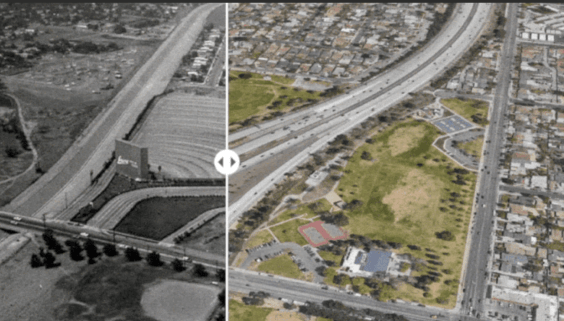 Photo: Myleen Hollero/Orange Photography.
Photo: Myleen Hollero/Orange Photography.Though San Francisco has been getting a lot of attention recently for its trial pedestrian plazas and "parklet" sidewalk extensions in former parking spaces, which has drawn interest from cities around the country and even spawned a copycat in New York City, the Big Apple has raised the bar considerably on improving pedestrian safety with the release this week of the NYCDOT's groundbreaking Pedestrian Safety Study and Action Plan.
Given the recent high-profile bicycle fatality at the hands of an allegedly drunken
driver on Masonic Avenue and the perpetual danger to pedestrians in San Francisco (4.33 fatalities per 100,000 population,
significantly higher than New York's 3.49, and nearly four times the rate in
one of the safest pedestrian cities, Stockholm, Sweden), pedestrian
advocates and city health professionals are urging city leaders to conduct a similar study and develop a comprehensive action plan for the
streets of San Francisco.
"I think the document itself that they’ve prepared is a statement from
the city that pedestrians are in fact a high priority," said Paul Supawanich, a member of the Pedestrian Safety Advisory Committee of the Board of Supervisors, about New York City. "We’ve yet to
have anything nearly as comprehensive in San Francisco."
"I think the fact that [New York City] was able to create something
the ties existing pedestrian conditions and injuries with action plans
including planning, enforcement, and performance measures is quite a
feat," he added.
New York City's study and plan place an economic and social cost
on pedestrian injuries and fatalities in New York City and set goals and a timeline to substantially
reduce vehicle to pedestrian crashes, including 20 mph "home zone"
trials in residential neighborhoods and the massive re-engineering of
the 60 most dangerous miles of streets to pedestrians.
Dr. Rajiv Bhatia, the
Director of Environmental Health at the San Francisco Department of
Public Health, said a rationale for reducing pedestrian injuries based
on economic or health indicators was fine, but he argued, "the reason we
should do it is it saves lives."
"I think culturally we have blinded ourselves to the fact that somebody
designed the system in a way that isn't safe for vulnerable users," he said. "They
designed it for the movement of cars. That bias is built into the
system."
San Francisco General Hospital, the city's only Class 1 trauma center and the facility where all pedestrian collisions are treated, has conducted an exhaustive study of pedestrian injuries and calculated the medical costs of those injuries at around $15 million yearly, but the city has yet to turn those figures into an action plan. While the San Francisco Municipal Transportation Agency (SFMTA), which runs Muni and manages the city's streets, boasts of a reduction of pedestrian injuries in its annual collision reports, they attribute much of that success to signal changes and new pedestrian countdown timers.
SFMTA spokesperson Paul Rose admitted they don't have a concrete target for reducing pedestrian collisions, nor a comprehensive plan to reach a target, but he said, "the Sustainable Streets division is dedicated to making our streets safer for all modes of transportation to co-exist."
Rose said in lieu of a comprehensive action plan, the agency conducts corridor and program-specific studies and tries to mitigate problem areas like Market and Octavia streets. "Traffic calming on local and residential roads is based on neighborhood
demand," he said and explained the process as one where the agency receives an application to perform a study to see if traffic
speeds go above a certain threshold, then they conduct mitigations based on the studies.
Rose also highlighted the signal re-timing and other engineering work on Valencia Street as a success story, where effective speeds have been reduced through a 12 mile-per-hour green wave. Though he cautioned more time was needed to collect and analyze traffic data, "we still believe the results we've seen and heard are positive."
Walk SF Director Manish Champsee hoped San Francisco would take cues from New York and other cities like Portland, OR, where there has been a push by Portland Metro to revise the street guidelines to make it easier to institute changes that benefit pedestrians and cyclists. Right now, most state departments of transportation, including Caltrans, make it prohibitively difficult to implement "design exemptions" like slower speed zones, traffic calming, and separated bicycle tracks.
Champsee argued the "85th percentile rule" used by Caltrans and other states for determining speed limits was a major impediment to creating safer conditions for pedestrians. The rule, according to Champsee, requires that speed limits can only be set at the 85th percentile of cars traveling along that stretch of road, such that only 15 percent of motorists will be speeding, and essentially guarantees highway conditions on city streets that are designed primarily for the speed and convenience of drivers.
"This creates something of a chicken-and-egg problem, though measures like the 12 mph light timing on Valencia can slow speeds down which can drive a reduction in the speed limit," said Champsee.
SFDPH's Bhatia didn't mince words in criticizing the city's failure to act faster or to have a broad vision for reducing pedestrian collisions along the lines of New York City or Sweden's Vision Zero.
He compared traffic engineering to medical practice and said it was troubling the city hasn't traffic calmed as many streets as possible with interventions like traffic circles, which, he noted, reduced pedestrian collisions by half over stop lights. "If I'm a doctor and I have a new technology that works and I don't use it, what do
you think will happen to me?" he asked rhetorically. "I'll no longer be a
doctor."
Despite the data showing the clear path forward, he said, city and state agencies responsible for making the roads safer haven't implemented serious engineering solutions. "Not putting in a traffic circle is doubling the chance of injury at that intersection," he said, as an example. "It can be viewed as a form of transportation malpractice not to implement known safety improvements."
If San Francisco were to get serious about pedestrian safety and develop a plan, Bhatia said, they could start by targeting the areas with the highest incidences of injury collisions. For example, the most dangerous 20 percent of census tracks experience 50 percent of injuries, compared with the least dangerous 20 percent of census tracts, which experience less than 5 percent of the injuries.
"We don't treat this as a fundamental environmental hazard that is fixable," he said. "We need to make walking like clean air, clean water. We need environmental rules for safe walking."





